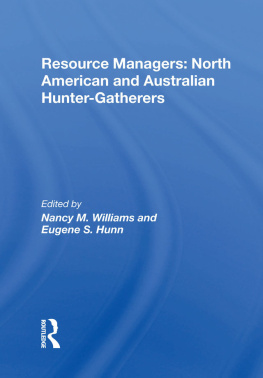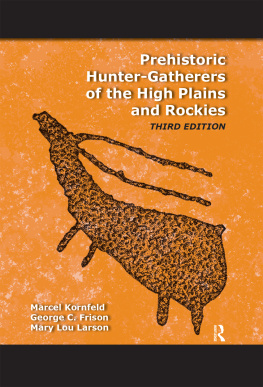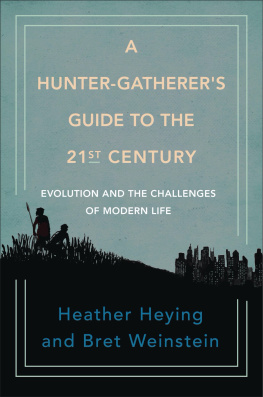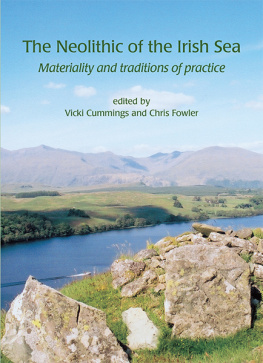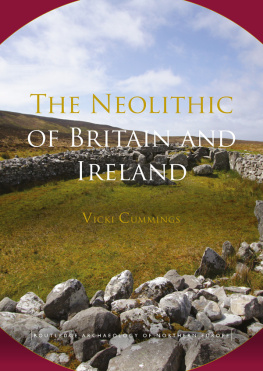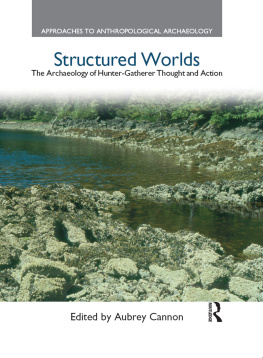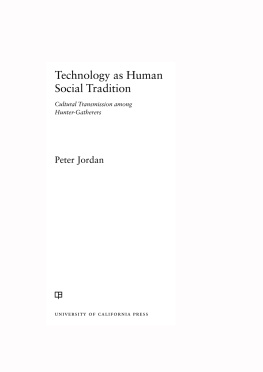The Anthropology of Hunter-Gatherers
The Anthropology of Hunter-Gatherers: Key Themes for Archaeologists
Vicki Cummings
First published 2013 by Bloomsbury Academic
Published 2020 by Routledge
2 Park Square, Milton Park, Abingdon, Oxon OX14 4RN
605 Third Avenue, New York, NY 10017
Routledge is an imprint of the Taylor & Francis Group, an informa business
Copyright Vicki Cummings, 2013
Vicki Cummings has asserted her right under the Copyright, Designs and Patents Act, 1988, to be identified as Author of this work.
All rights reserved. No part of this book may be reprinted or reproduced or utilised in any form or by any electronic, mechanical, or other means, now known or hereafter invented, including photocopying and recording, or in any information storage or retrieval system, without permission in writing from the publishers.
Notice:
Product or corporate names may be trademarks or registered trademarks, and are used only for identification and explanation without intent to infringe.
British Library Cataloguing-in-Publication Data
A catalogue record for this book is available from the British Library.
ISBN: 978-1-7809-3202-6
Library of Congress Cataloging-in-Publication Data
A catalog record for this book is available from the Library of Congress.
Cummings, Vicki.
The anthropology of hunter-gatherers: key themes for archaeologists / Vicki Cummings.
pages cm.
Includes bibliographical references and index.
ISBN 978-1-7809-3202-6 (hardcover)
1. Hunting and gathering societies.
2. Archaeology. 3. Antiquities, Prehistoric. I. Title.
GN388.C86 2013
306.3'64dc23
2012045739
ISBN13: 978-1-7809-3202-6 (hbk)
ISBN13: 978-1-4725-8402-1 (pbk)
Typeset by Jones Ltd, London
For Rick
The aim of this volume is to introduce archaeologists studying prehistoric hunter-gatherer communities to key ideas and debates surrounding the anthropological study of more recent hunter-gatherers. The volume covers major themes in hunter-gatherer research, and each chapter presents a summary of anthropological research, interspersed with prehistoric case studies. Throughout the volume, the usefulness of ethnographic analogy is addressed: how does the study of modern hunter-gatherer groups assist us in understanding past societies? Critically, this volume is written from a particular theoretical viewpoint, that of interpretive archaeology, and as such it is focussed on issues of direct interest to that theoretical approach. This volume is thus not concerned to address what hunter-gatherers did, either in the past or present, but why they acted in particular ways. The volume in particular focuses on the symbolic aspects of peoples lives, which it is argued are inextricably and unavoidably intertwined in everyday life. The overall aim of this volume is thus to stimulate debate on the interplay between the anthropological study of hunter-gatherer groups and the archaeological interpretation of past hunter-gatherer societies. Indeed, the volume will suggest that the study of hunter-gatherer groups offers us ways of thinking about many groups, not just hunter-gatherers, in the past.
Throughout the volume, I have referred to the names of many different groups of hunter-gatherers. I have had to make a choice with regard to which names to use for many of these groups, and I have decided to follow the names that appear most commonly in the anthropological literature. So, for example, I refer to the Kwakiutl people, not the Kwakwakawakw as the people themselves prefer to be called. As this volume is designed as a basic introduction to the anthropology of hunter-gatherers, using these names makes it easier for readers to find out more about these people in the wider literature. No offence is intended by using incorrect names for groups, and I wholeheartedly reject any of the negative connotations which surround some of the names which have been traditionally used anthropologically.
I would like to start at the beginning and thank the person who first sparked my interest in hunter-gatherers: Alasdair Whittle is responsible for putting various articles and books on hunter-gatherers under my nose as an impressionable research student. Those initial forays into the world of hunter-gatherers have shaped the archaeology that I have done ever since. Over the last few years, I have spent considerable amounts of time discussing aspects of hunter-gatherer studies with David Robinson, who has also introduced me to the archaeology and anthropology of the Chumash. While I cannot hold him responsible for anything in this volume, it has certainly been shaped by our debates. Discussions with Peter Jordan have also been absolutely invaluable, and I have written this volume alongside editing the OUP handbook of hunter-gatherers with Peter and Marek Zvelebil: Marek sadly passed away before that volume was completed, and he is a great loss to the archaeological community. I have received considerable support from my own institution, the University of Central Lancashire, who continues to actively support archaeological research. Part of this volume was written while on sabbatical, funded by the University, and I am very grateful to my then Head of School, Lee Chatfield, for all his support. This volume has also benefitted from discussions with Oliver Harris, Rick Peterson, Bronwen Price, Colin Richards and Jennie Robinson. Draft chapters were read by Peter Jordan, David Robinson and Graeme Warren, and I am enormously grateful to them for their insightful comments. I am also grateful to Deborah Blake at Duckworth who has been eternally patient with me during the production of the book. Finally, this book is dedicated to my colleague Rick Peterson, for knowing the answer to everything.
Summary of chapter
This chapter gives a brief introduction to the study of hunter-gatherers and sets out why, as archaeologists, we should read and engage with anthropological studies. It details what ethnographic analogy involves, then summarizes the pros and cons of using it. It is therefore an introduction to the issues of cross-cultural analogy in anthropology and archaeology, setting the scene for the rest of the volume.
The aim of the volume
There is an enormous literature on hunter-gatherers, both modern groups and those in the past. The aim of this volume is as an introductory text for archaeologists seeking to gain a way into the anthropological literature on hunter-gatherers. This is not a complete and comprehensive guide to the study of hunter-gatherers it is an enormous field and one that cannot easily be summarized in a short book. Kellys Foraging spectrum (Kelly 1995) remains an invaluable introductory yet comprehensive volume, and the recent hunter-gatherer encyclopaedias are also useful introductions to the topic (see Cummings et al., forthcoming; Lee and Daly 1999). Instead, this book offers a taste of the broader literature, with a particular emphasis on issues and ideas relevant to the study of ancient hunting and gathering populations. Indeed, the volume will explore whether or not the study of modern hunter-gatherers is useful for understanding past people (ethnographic analogy: see below). Indeed, it will be suggested that ethnographic analogy with modern hunter-gatherers may be relevant for studying people who not only made a living through hunting and gathering but also agricultural populations, particularly those that were partially mobile and/or small-scale. However, throughout the volume, we continue to address this key question: how useful is ethnographic analogy for understanding the past? This is explored through themed chapters covering issues such as subsistence, mobility, belief systems and social organization. In addition to this, the book is written from a particular theoretical viewpoint. Post-processual or interpretive archaeologists have a broad interest in symbolic approaches to the past, and in culturally specificity (contextual archaeologies). This volume fits into that broader agenda by emphasizing issues of interest and relevance to those exploring an interpretive approach. However, there is a tremendous literature on hunter-gatherers from the processual (or ecological) viewpoint, and key approaches from that paradigm are also introduced. It is hoped that this volume may also, therefore, be useful to those more familiar with ecological approaches as an introduction to the kinds of themes that interpretive archaeologists are interested in.




